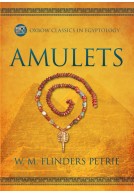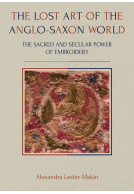Glass Stamps and Weights (Paperback)
By
W M Flinders Petrie
Imprint: Oxbow Books
Series: Oxbow Classics in Egyptology
Pages: 58
Illustrations: Fully illustrated with photographs and line drawings
ISBN: 9798888570081
Published: 15th February 2023
Script Academic & Professional
Imprint: Oxbow Books
Series: Oxbow Classics in Egyptology
Pages: 58
Illustrations: Fully illustrated with photographs and line drawings
ISBN: 9798888570081
Published: 15th February 2023
Script Academic & Professional
You'll be £24.95 closer to your next £10.00 credit when you purchase Glass Stamps and Weights. What's this?
+£4.99 UK Delivery or free UK delivery if order is over £40
(click here for international delivery rates)
Need a currency converter? Check XE.com for live rates
(click here for international delivery rates)
Need a currency converter? Check XE.com for live rates
A facsimile volume of a detailed catalogue prepared by Flinders Petrie on artifacts largely collected from his Egyptian explorations of a series of glass stamps of Egyptian manufacture that were used from the Roman to Abbasid period variously as tokens, counters, weights, or attached to glass cups as indications of measure.
Various categories are identified and described, makers’ names discussed, and weight standards considered. Over 700 stamps are illustrated both as photographs and transcribed line drawings.
This volume is part of a new series comprising facsimile re-issues of typological catalogues produced between 1898 and 1937 by W. M. Flinders Petrie, based on his vast collection of Egyptian artefacts. Mostly excavated by Petrie during many seasons of campaign in the latter years of the 19th and early decades of the 20th century, these artefacts now reside in the Petrie Museum at University College, London. Long out of print, the catalogues were re-issued in facsimile by publishers Aris & Phillips in the 1970s alongside newly-commissioned titles, based on more recent examination of elements of the Petrie Collection by contemporary experts. The Oxbow Classics in Egyptology series makes a selection of these important resources available again in print for a new generation of students and scholars.
There are no reviews for this book. Register or Login now and you can be the first to post a review!
About W M Flinders Petrie
Sir William Matthew Flinders Petrie (1853–1942) was a pioneer in the field of ‘modern’ archaeology. He introduced the stratigraphical approach in his Egyptian campaigns that underpins modern excavation techniques, explored scientific approaches to analysis and developed detailed typological studies of artefact classification and recording, which allowed for the stratigraphic dating of archaeological layers. He excavated and surveyed over 30 sites in Egypt, including Giza, Luxor, Amarna and Tell Nebesheh.
More titles by W M Flinders Petrie
Other titles in the series...
Other titles in Oxbow Books...



























